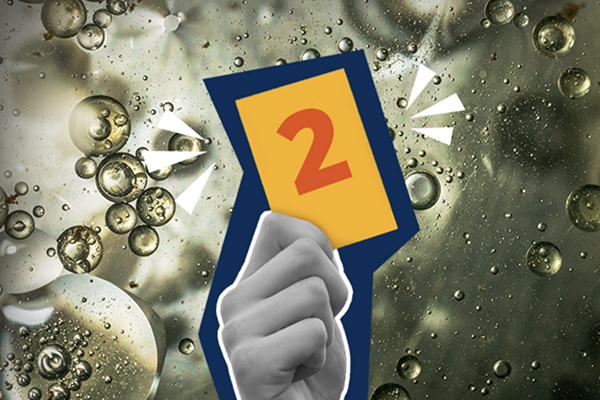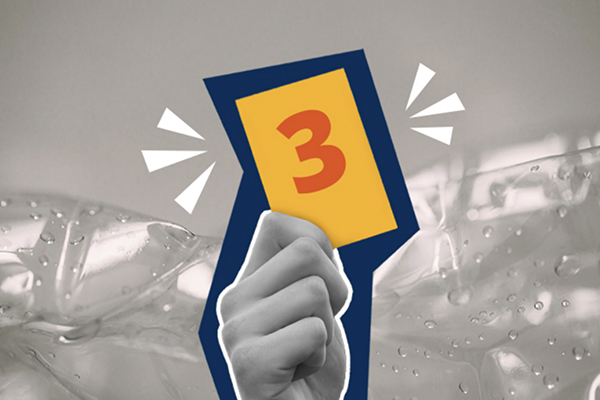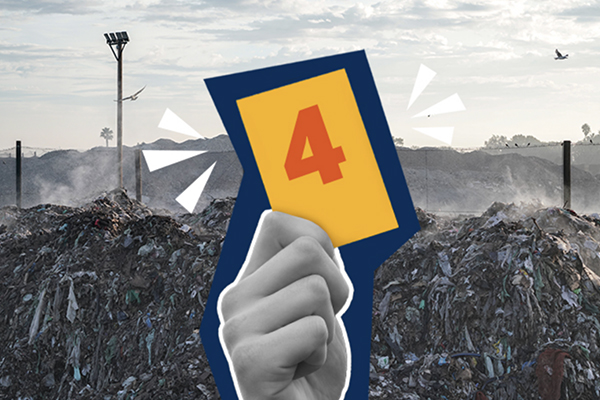5 Myths About Artificial Turf
 Myth 1: Turf isn’t safe or good for people.
Myth 1: Turf isn’t safe or good for people.
The truth is that artificial turf can be both safe and provide a positive playing experience.
When it comes to safety, there are several reasons that artificial turf is a safe choice for both play and leisure. For instance, TenCate turf is specially designed and calibrated to accommodate human movement, specifically for playing the games we love. At our Centre for Turf Innovation, we combine biomechanical testing and athlete feedback to create turf that optimizes player-surface interactions. We’re always evolving our turf to empower athletes and enthusiasts to compete at their best, and that ultimately includes safety.
Another area we’re focusing on to improve player safety and comfort is cooling. At TenCate, we’ve developed a revolutionary GeoCool™ infill system that reduces surface temperature through slow evaporative cooling. This helps cool down the field so that athletes can stay in the game longer and play in all seasons.
Turf has a secret superpower of bringing people together to play in places where it would be otherwise unfeasible or impossible. Because artificial turf requires no irrigation, fertilization, or ongoing maintenance like mowing, it can be installed just about anywhere. That means dense urban areas and places experiencing drought have an option to play year-round without expensive fees for upkeep. And the ability for people to move about and enjoy themselves is better than good — it’s life-affirming.
Even in areas that have enough (or more than enough) rainfall, turf poses several advantages. When natural grass fields get wet and are played on, the surface becomes a slick, muddy and uneven mess. In order to protect the field and players, play has to stop until the field dries out. With turf, play can continue as long as surface conditions are safe — not too slippery — and there’s no need to wait days for the field to recover.
 Myth 2: Turf is dangerous because of PFAS exposure.
Myth 2: Turf is dangerous because of PFAS exposure.
The truth is that artificial turf contains less PFAS than many products that people use and ingest every day.
If artificial turf contains PFAS, the typical range is about 100 parts per million (ppm). It’s a very small, trace amount. To put it in perspective, dental floss can have as much as 248,900 ppm and people put that directly in their mouths. Moreover, dozens of products we use every day — nonstick cookware, prescription medications, raingear, and makeup, to name a few — contain much more PFAS than artificial turf. So are we going to ban all of those things too? Probably not.
TenCate has taken the PFAS issue as an opportunity to innovate. We analyzed our turf product from top to bottom and isolated the source of PFAS, an extrusion agent. We’ve since removed that extrusion agent from our manufacturing and now design all our turf without PFAS. With this leap forward, PFAS in turf can hopefully become yesterday’s news.
 Myth 3: Turf replaces something natural with plastic.
Myth 3: Turf replaces something natural with plastic.
One of the biggest misconceptions out there is that a natural grass field is, in fact, “natural.” This couldn’t be further from the truth. “Natural” grass requires extensive chemical interventions (fertilizers, herbicides and pesticides) and expensive routine maintenance (mowing and weeding) to maintain that manicured look.
In short, there’s nothing natural about it. Natural grass is completely constructed and resource intensive. Many places simply don’t have the financial resources to keep a “natural” field well-manicured, which in addition to wear and tear, can be downright dangerous for players. As the field is worn down by play or weather, the grass gets patchy and the playing surface becomes uneven — setting athletes up for injury. It’s a lose-lose situation.
So while artificial turf isn’t a natural option, it’s a fantastic solution for a year-round, low-maintenance outdoor surface where people can say, “Let’s play.”
 Myth 4: Old turf ends up in a landfill.
Myth 4: Old turf ends up in a landfill.
This is another area where TenCate saw an opportunity to innovate. Because once upon a time, old turf did end up in a landfill. But we’re changing all that with TenCate Turf Recycling Solutions. Now, artificial turf of any brand — yep, we recycle our competitors’ turf just because it’s the right thing to do — that’s past its usable lifespan can be removed and recycled.
It all starts with removal of the turf field, using tractors that roll it up into large circular bales. Then, it’s shipped to a processing facility where the sand and infill is separated out. The artificial grass that is left behind is shredded so that it can be recycled. The last phase of the process, called advanced recycling, involves heavy duty technology that breaks the turf down into its base molecules, which are combined with other materials to create feedstock — the building blocks of new products.
It’s a long journey, but one we feel is worth it. Bringing circularity to artificial turf is so rewarding and helps the entire industry take another step forward in sustainability.
 Myth 5: Turf is bad for the environment.
Myth 5: Turf is bad for the environment.
The truth here is that, when compared to natural grass fields, turf actually solves some really big environmental challenges. For starters, turf requires much less water than the extensive irrigation and watering required of natural grass. This is critical in places experiencing drought and those that have water bans in place.
The fertilizer and pesticides required for natural grass fields are also problematic for the environment. They are known to create runoff that leeches into the local water tables, bringing with it a high nutrient load which can cause imbalances in the ecosystem. Natural grass fields also require a lot of mowing, which requires gasoline — a fossil fuel.
Altogether, turf does a pretty good job of preserving scarce resources such as water and fuel, while avoiding potentially harmful chemicals from entering the environment. We see this as a win and a way of helping communities preserve and protect their local environment.
There you have it: from player safety to PFAS and plastic, to recycling and the environment, five myths about artificial turf busted.

